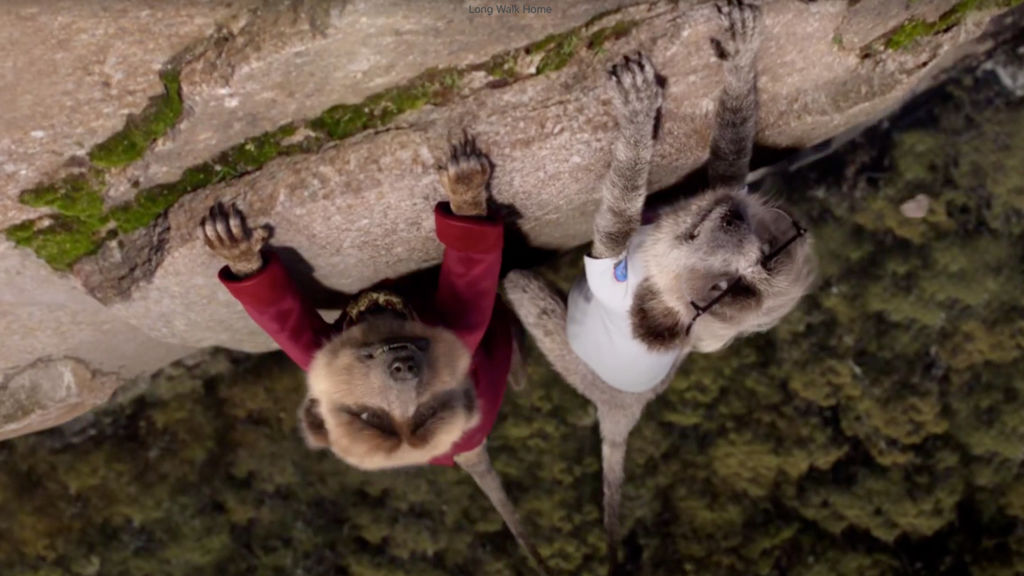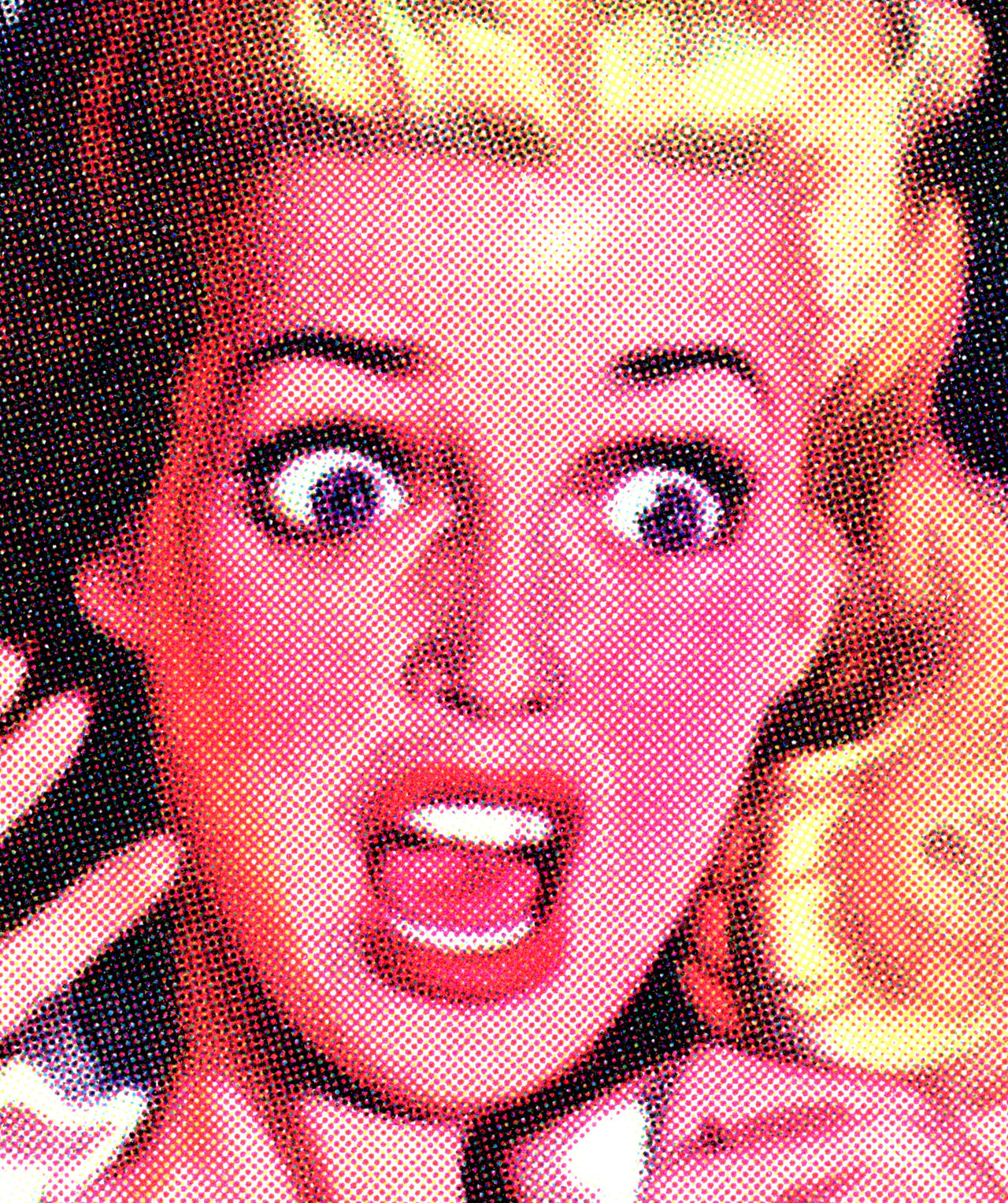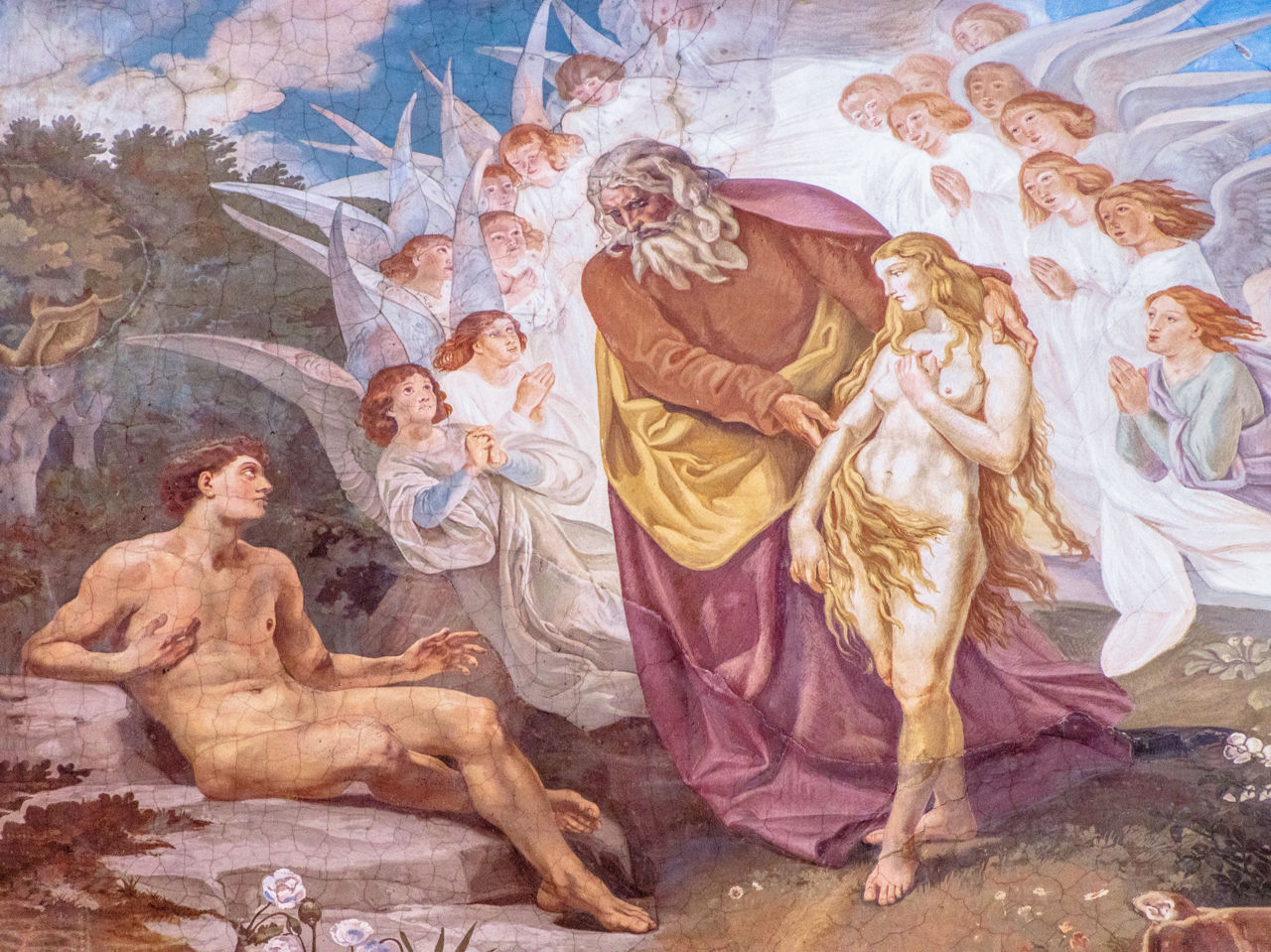The psychology of comedy
In a readers' poll of the best ad of all time run by Campaign in 2008, every entry in the top ten was a comic commercial, with John West's 2000 classic, Bear, being the winner. Here, G Neil Martin, Honorary Professor of Psychology at Regent's University of London, and author of the book The Psychology of Comedy, delves into the mechanics of humour and explores the role of mirth in marketing.
Can you give us a brief idea of how humour is part of our species’ evolutionary journey? Do other animals laugh?
One theory of laughter, which tries to explain it in evolutionary terms, argues that one of its purposes is to encourage social cohesion. It enhances co-operation and affiliation and makes the vocaliser less threatening.
Other species, especially non-human primates, also express vocalisations similar to human laughter but, because we cannot understand a non-human primate’s mentalising, we can’t be sure what this laugher means or why it was produced. It’s guesswork, basically.

Professor G Neil Martin is also former books editor of Deadpan magazine and editorial board member of the Annals of Improbable Research.
Do you think the social bonding element of shared humour is the main reason comedy is an effective tool in advertising and brand building?
Only to a small extent. It helps if you understand and are sympathetic to the type of humour used – and whether you are positively or negatively disposed towards the 'target' of the humour. If the humour relies on shared understanding of the situation that makes the advert effective, but humour doesn’t need to rely on social bonding (we can laugh at animated characters being hit over the head with a massive mallet, for example).
There is quite a bit of research showing that humour in ads makes them memorable.
If you think of one of the best, and most famous, political puns of the last 100 years in advertising, the Saatchi's 'Labour isn’t working' poster – you can appreciate and admire the pun, even if you’re not a Tory supporter/voter (i.e. share no affiliation with the subject of the advert).

Saatchi's 1979 poster campaign for the Conservative Party.
Can you summarise what seems to make comic ads so popular.
Comedic commercials don’t take the product too seriously and they use humour to draw attention to the product rather than hitting you over the head with a big sign saying “buy this! buy this!”.
Humour draws us in. And this exposes some tension regarding what ads do and don’t do. There is quite a bit of research showing that humour in ads makes them memorable.
Credits
powered by
- Agency Leo Burnett/London
- Production Company Spectre/LONDON
- Director Daniel Kleinman
-
-
Unlock full credits and more with a Source + shots membership.
Credits
powered by
- Agency Leo Burnett/London
- Production Company Spectre/LONDON
- Director Daniel Kleinman
- Art Director Leo Burnett/London
- Copywriter Leo Burnett/London
- Producer Charlie Gatsky
- ECD Mark Tutssel
- ECD Nick Bell
- Post Smoke & Mirrors New York
- Line Producer David Botterell
- Editor Steve Gandolfi
- Sound Design Jungle Studios
- Music Jungle Studios
- DP Stephen Blackman

Credits
powered by
- Agency Leo Burnett/London
- Production Company Spectre/LONDON
- Director Daniel Kleinman
- Art Director Leo Burnett/London
- Copywriter Leo Burnett/London
- Producer Charlie Gatsky
- ECD Mark Tutssel
- ECD Nick Bell
- Post Smoke & Mirrors New York
- Line Producer David Botterell
- Editor Steve Gandolfi
- Sound Design Jungle Studios
- Music Jungle Studios
- DP Stephen Blackman
Is John West Salmon's Bear, directed by Daniel Kleinman, the funniest commercial of all time?
Why is violent or slapstick humour so popular? Can you think of some notable ads that use such humour?
Slapstick, like incongruity (especially visual incongruity), is popular because it doesn’t require understanding of language and so can be used (and in most cases, understood) universally. From Buster Keaton to Mr Bean.
The TV advert once rated the best by industry professionals had a man hitting a bear in the groin over a fish.
Another famous example – blending slapstick with incongruity – is the Hamlet cigar campaign where Gregor Fisher repeatedly fails to have his photograph taken in a photo booth. This has two parts – the failure to take a passport photo, and the desperate re-arranging of his terrible combover.
Violence in ads is much less common now, for various regulatory reasons about what you can and can’t show.
Credits
powered by
-
- Production Company Rose Hackney Barber
- Director Graham Rose
-
-
Unlock full credits and more with a Source + shots membership.
Credits
powered by
- Production Company Rose Hackney Barber
- Director Graham Rose

Credits
powered by
- Production Company Rose Hackney Barber
- Director Graham Rose
Gregor Fisher, above, along with Ian Botham and Ronnie Corbett was one of the stars of the hilarious 1980s 'Happiness is a cigar called Hamlet' series.
Do you think that utilising the emotional response of laughter is more valuable in advertising than the stimulation of other emotions?
Yes, because it is associated with a positive emotion. You can, of course, manipulate other emotions – such as sadness and empathy and a lot of charity campaigns do this because that emotion is appropriate for the context.
A plaintive soundtrack on a carpet cleaner ad would not be right (unless you’re using this incongruity to poke fun at the tone and content of the ad). We know laughter is contagious – study after study shows that we laugh when others laugh. If you use it in ads, it needs to be done right. A burger company tried to do this in the last couple of years and the people laughing just looked a tad unhinged.
Credits
powered by
- Agency Leo Burnett/London
- Production Company Academy
- Director Billy Boyd Cape
-
-
Unlock full credits and more with a Source + shots membership.
Credits
powered by
- Agency Leo Burnett/London
- Production Company Academy
- Director Billy Boyd Cape
- Producer Juliette Harris
- Executive Producer Simon Cooper
- Editor Billy Mead
- Colorist Toby Tomkins
- Audio Mixer/Sound Design Jack Hallett
- Post Production Framestore/London
- DP Patrick Meller
- Creative Director Andrew Long
- Creative Director James Millers
- Creative Joe Miller
- HP/Producer Graeme Light

Credits
powered by
- Agency Leo Burnett/London
- Production Company Academy
- Director Billy Boyd Cape
- Producer Juliette Harris
- Executive Producer Simon Cooper
- Editor Billy Mead
- Colorist Toby Tomkins
- Audio Mixer/Sound Design Jack Hallett
- Post Production Framestore/London
- DP Patrick Meller
- Creative Director Andrew Long
- Creative Director James Millers
- Creative Joe Miller
- HP/Producer Graeme Light
Though comic ads raise brand awareness, do they increase sales?
There isn't much research on whether humour makes people buy more of the product. We don’t really know because (1) the data isn’t shared/made public (2) doing real-life, properly ecologically valid, studies is almost impossible and (3) there is confirmation bias – if you see an uptick in sales, you might think it’s because you have a cracking, funny ad but there may be another underlying reason.
Humour is a better persuasive tool than sadness.
So, this is all correlation – the Go Compare tenor and the Russian meerkats are good examples of a vaguely funny idea taking off, making the product and the company more well-known and increasing consumer traffic.
Credits
powered by
- Agency VCCP/Sydney
- Production Company Passion Pictures/Melbourne
- Director Dave Scanlon
-
-
Unlock full credits and more with a Source + shots membership.
Credits
powered by
- Agency VCCP/Sydney
- Production Company Passion Pictures/Melbourne
- Director Dave Scanlon
- Editor Gus Herdman
- Producer Sue Hind
- Creative Director Paul Sharp
- Executive Producer Graham Pryor
- Producer Megan Plane
- Colorist Fergus Rotherham
- Editor Tom Marley
- VFX Adrian Oostergetel
- Producer Anna Cunnington
- CG Supervisor Jason Nicholas
- VFX Supervisor Dave Walker
- Sound Designer Ben Leeves

Credits
powered by
- Agency VCCP/Sydney
- Production Company Passion Pictures/Melbourne
- Director Dave Scanlon
- Editor Gus Herdman
- Producer Sue Hind
- Creative Director Paul Sharp
- Executive Producer Graham Pryor
- Producer Megan Plane
- Colorist Fergus Rotherham
- Editor Tom Marley
- VFX Adrian Oostergetel
- Producer Anna Cunnington
- CG Supervisor Jason Nicholas
- VFX Supervisor Dave Walker
- Sound Designer Ben Leeves
Can humour in advertising ever detract from the brand message?
The humour has to be appropriate for the context – if it isn’t, or it is too offensive, the brand is tarnished/discredited.
Can you explain why humour used in public health campaigns or charity ads can be more effective than attempting to leverage other emotions?
It comes back to how manipulated viewers/readers feel. If done well, manipulating all emotions can be effective, but humour is safer because we would rather laugh than cry or recoil in horror. And humour is a better persuasive tool than sadness – there’s a lot of evidence showing that we like people who make us laugh and we are more willing to help. So, an advert that makes us laugh might be more likely to make us help.
A good mood makes us more receptive to co-operation and offering resources. People in a good mood tend to gamble more, for example.
Credits
powered by
- Agency Leo Burnett/London
- Production Company Missing Link Films
- Director Alicia MacDonald
-
-
Unlock full credits and more with a Source + shots membership.
Credits
powered by
- Agency Leo Burnett/London
- Production Company Missing Link Films
- Director Alicia MacDonald
- Editor The Assembly Rooms
- Editor The Assembly Rooms
- Post Production Black Kite Studios
- Talent Joanna Lumley
- Chief Creative Officer Chaka Sobhani
- Executive Creative Director Mark Elwood
- Producer Alex Taylor / UK (Producer)
- Producer Georgina Pearson
- Producer Ben Link
- Audio Post Factory, London

Credits
powered by
- Agency Leo Burnett/London
- Production Company Missing Link Films
- Director Alicia MacDonald
- Editor The Assembly Rooms
- Editor The Assembly Rooms
- Post Production Black Kite Studios
- Talent Joanna Lumley
- Chief Creative Officer Chaka Sobhani
- Executive Creative Director Mark Elwood
- Producer Alex Taylor / UK (Producer)
- Producer Georgina Pearson
- Producer Ben Link
- Audio Post Factory, London
Can you tell us something about the incongruity theory of humour, and how horror and humour are closely related?
Incongruity is a major theory of humour and laughter, along with superiority theory, and explains a lot of humour. Re: superiority, there is also a view that every joke has a target/butt and it’s surprising how often this turns out to be true even if that butt is an object.
But there is a theory which tries to explain why we enjoy horror that can also apply to comedy and this is the Excitation Transfer Theory developed by Zillman (1971).
A punchline provides the relief of tension.
This proposes that we enjoy horror because there is increase in suspense but we only enjoy this if there is a resolution of this tension at the end; if there isn’t, the feeling turns to dread. This is similar to the build up of a joke, where the punchline provides the relief of tension. It may also explain the reaction of bad jokes: there is an unsatisfactory relief from tension.

How does humour relate to taboo and the sanctity of religion and death?
The Old Testament was none too keen on it. Of the total number of references (29) to humour in the Old Testament ALL are negative; belittling or scolding its use. This was a common theme until around the 16th Century – people who used humour were considered social deviants.
It was only from this period on that the terms ‘wit’ and ‘humour’ became something to be admired/liked and marks of esteem and approbation, rather than dismissed. The plot of Umberto Eco’s 1980 novel, The Name Of The Rose, for example, is about exactly this and the stigma of laughter/humour.
Re: death. There are many accounts of using humour as a form of emotional anaesthesia – via the use of gallows humour in response to death and trauma, for example.

Humour hasn't always been in vogue, The Old Testament, for example, repeatedly scolds its use.
There seems to be some suggestion that men and women respond differently to humour in advertising, with men being more likely to respond favourably, is there any research into why that might be the case?
There’s little work on this although there is a lot of work on sex differences in humour production and appreciation more generally. In terms of what men and women like, there is very little difference between them. There is evidence that men produce more humour, and that women rate sense of humour as being important in men, but men not in women; so, being able to make a partner laugh is seen as desirable in terms of long-term mating success.
There is also evidence that men and women find humour produced by men funnier but that’s not related to advertising especially.
Does Mr Bean (below) possess more or less allure due to being funny?

)




 + membership
+ membership












